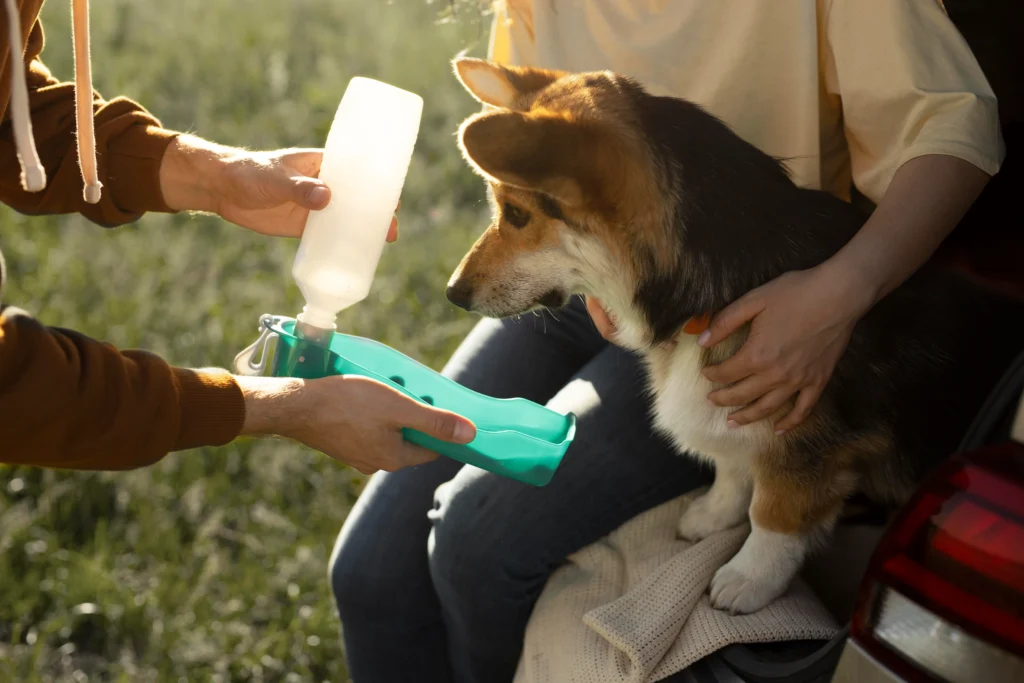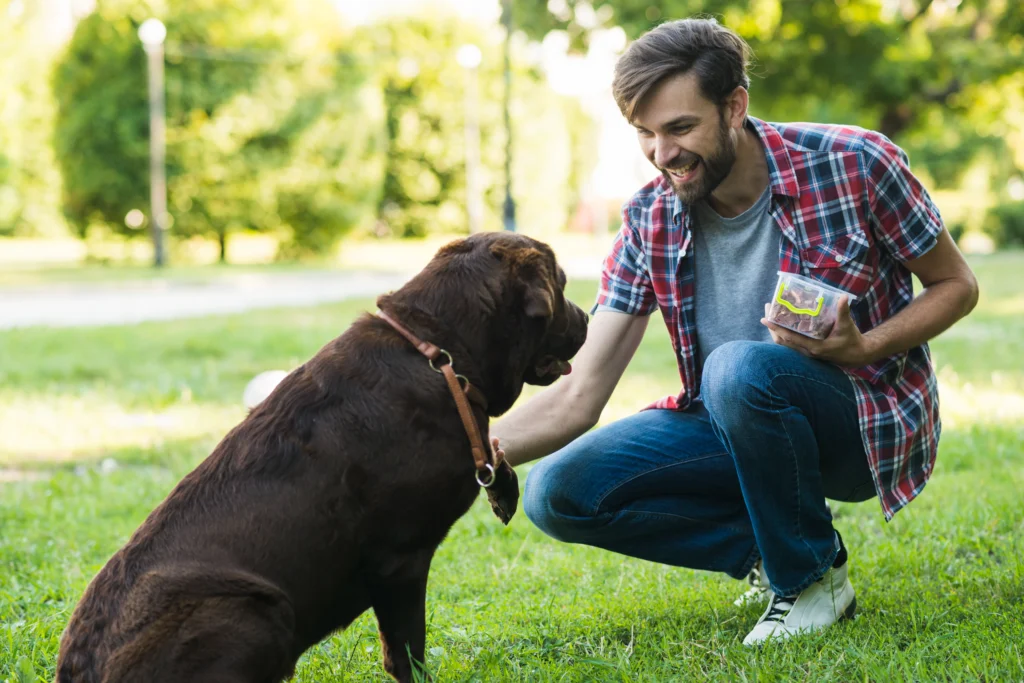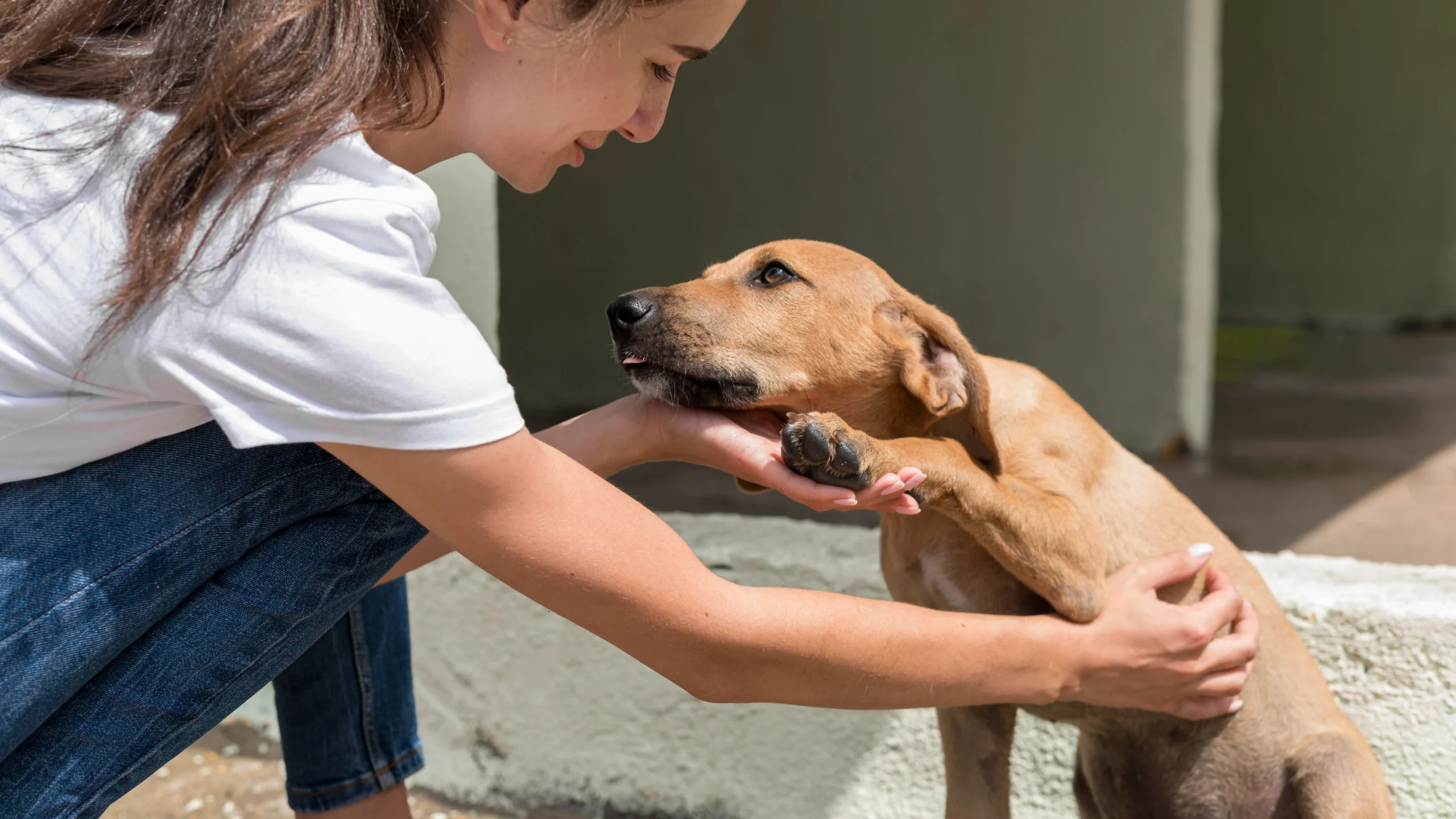Finding yourself in a position where you need to rehome your beloved dog is one of the most difficult decisions any pet owner can face. Whether due to changing life circumstances, behavioral challenges, or other unavoidable situations, the process of finding a new home for your canine companion can be emotionally draining and logistically complex.
As someone who has volunteered with rescue organizations for years, I’ve witnessed firsthand the heartbreak that occurs when rehoming isn’t handled properly. The good news is that with proper planning and awareness, you can ensure your dog transitions to their new home with minimal trauma—for both of you.
In this comprehensive guide, we’ll explore the five most devastating mistakes people make when rehoming a dog and provide actionable alternatives to help you navigate this challenging journey with compassion and responsibility.
Understanding the Reality of Rehoming
Before diving into the mistakes to avoid, it’s important to acknowledge that rehoming a dog, while difficult, is sometimes the most loving choice you can make. According to the American Humane Association, approximately 8 million animals enter shelters each year, with many coming from homes where owners felt they had no other options.
Responsible rehoming—finding your dog a new loving home directly rather than surrendering to an overcrowded shelter—can be a compassionate alternative when done correctly. The key is doing it with your dog’s best interests at heart and avoiding common pitfalls that can lead to additional trauma or unsuccessful placements.
Mistake #1: Making Hasty Decisions Without Exploring Alternatives
One of the most heartbreaking mistakes dog owners make is rushing into rehoming without fully exploring other options. In moments of stress or crisis, rehoming might seem like the only solution, but there are often alternatives worth considering.
Why This Mistake Is So Devastating
When dogs are rehomed impulsively, they may:
- Experience unnecessary separation from a family they love
- End up in multiple homes if the new situation doesn’t work out
- Develop behavioral issues from the stress of sudden changes
Better Approach: Explore All Possible Solutions
Consider these alternatives before deciding on rehoming:
- Training and behavior modification: For issues like aggression or other behavioral concerns, consult with a professional dog trainer or animal behaviorist. Many problems that seem insurmountable can be addressed with proper training and consistency.
- Temporary care arrangements: If you’re facing a short-term crisis like hospitalization, military deployment, or housing transitions, temporary fostering might be a better option than permanent rehoming.
- Pet-friendly housing: If housing restrictions are the issue, resources like the Humane Society’s guide to finding pet-friendly housing can help you locate accommodations that welcome your furry family member.
- Financial assistance: If veterinary costs or pet expenses are the concern, look into resources like RedRover Relief or breed-specific rescue organizations that may offer financial assistance.
According to a study published in the journal Animals, approximately 40% of rehoming situations could have been prevented with timely intervention and support resources. Taking the time to thoroughly explore alternatives not only might keep your family together but prevents unnecessary trauma to your dog.
Mistake #2: Failing to Be Transparent About Your Dog’s History and Needs
When the pressure to find a new home mounts, some owners minimize or completely omit important information about their dog’s health issues, behavioral challenges, or special needs. This mistake, while perhaps well-intentioned, can have devastating consequences.
Why This Mistake Is So Devastating
Hiding information about your dog can lead to:
- Failed placements when new owners discover undisclosed issues
- Dangerous situations if aggressive tendencies weren’t shared
- Inadequate care if medical needs weren’t properly communicated
- Additional trauma for the dog when they’re returned or rehomed again
Better Approach: Full Transparency Creates Better Matches
When rehoming a dog with behavior issues or rehoming a dog due to aggression, honesty is crucial:
- Create a comprehensive profile: Document your dog’s complete history, including medical records, behavioral challenges, training history, and daily routines. The ASPCA’s pet profile template offers a good starting point.
- Be specific about triggers: If your dog has shown aggression in certain situations (around food, with small children, etc.), clearly communicate these triggers to potential adopters.
- Detail management strategies: Share what has worked in managing any behavioral challenges, including training techniques, management tools, or medication if applicable.
- Communicate special needs: Whether it’s a prescription diet, regular medication, or particular exercise requirements, be upfront about all care needs.
As one rescue volunteer told me, “The right home for a challenging dog exists—but only if we’re honest about what those challenges are.” Remember, the goal isn’t just to find any home, but the right home where your dog can thrive.
Mistake #3: Using Unreliable or Unsafe Rehoming Methods
In the digital age, it’s temptingly easy to post a quick “Free dog to good home” ad online. However, this approach can lead to some of the most heartbreaking outcomes in dog rehoming scenarios.
Why This Mistake Is So Devastating
Casual or unvetted rehoming methods can result in:
- Dogs ending up as bait animals for dog fighting rings
- Placement with hoarders or abusive owners
- Dogs being used for breeding puppy mills
- Dogs being resold for profit rather than kept as family pets

Better Approach: Use Safe, Established Rehoming Pathways
When looking for the best way to rehome a dog safely, consider these more secure options:
- Reputable dog rehoming websites: Platforms like Rehome by Adopt-a-Pet.com and Get Your Pet offer structured processes for screening potential adopters.
- Breed-specific rescues: If your dog is a purebred or recognizable mix, breed-specific rescue organizations often have experienced foster networks and stringent adoption processes. The AKC Rescue Network can help you locate these organizations.
- Work with local shelters: Many shelters offer “courtesy postings” where they help advertise your dog while they remain in your care, combining their screening expertise with the stability of your home during the transition.
- Create a rehoming checklist: Develop a systematic approach to screening potential adopters, including:
- Conducting interviews about their lifestyle and experience
- Checking references, including from veterinarians
- Performing home visits when possible
- Requiring proper identification
- Creating a written adoption agreement
According to pet welfare experts, dogs rehomed through structured processes with proper screening are far less likely to be rehomed again or end up in shelters compared to those given away through casual methods.
Mistake #4: Neglecting the Emotional and Practical Transition Process
Even with the best possible new home selected, abruptly transferring your dog without proper transition can cause significant emotional distress and adjustment problems.
Why This Mistake Is So Devastating
Poor transitions can lead to:
- Severe separation anxiety in your dog
- Development of new behavioral problems
- Difficulty bonding with new owners
- Failed placements due to adjustment issues
Better Approach: Create a Thoughtful Transition Plan
To minimize the emotional effects of rehoming a dog:
- Arrange meetings before transfer: If geography allows, schedule several meetings between your dog and the new owners, ideally in different environments, to build familiarity.
- Provide familiar items: Send along your dog’s bed, toys, and other familiar objects to provide comfort and continuity.
- Create a detailed care document: Beyond medical history, include information about your dog’s routine, favorite games, commands they know, and comfort strategies.
- Consider a trial period: When possible, arrange a trial placement with a clear agreement about what happens if the match isn’t working out.
- Offer post-adoption support: Being available (within reasonable boundaries) to answer questions or provide guidance during the adjustment period increases success rates.
One study published in the Journal of Veterinary Behavior found that dogs who experienced gradual transitions showed significantly fewer stress behaviors and adjusted more quickly to their new homes compared to those who experienced abrupt changes.
Mistake #5: Choosing Convenience Over Compatibility When Selecting a New Home
Perhaps the most devastating long-term mistake is prioritizing speed or convenience over finding the right match for your dog’s specific needs and personality.

Why This Mistake Is So Devastating
Poor matches often result in:
- Multiple rehoming experiences for the dog
- Development or worsening of behavioral issues
- Diminished quality of life for the dog
- Potential return to shelters or euthanasia in worst cases
Better Approach: Prioritize Finding the Perfect Match
To find the most compatible new home:
- Identify your dog’s ideal environment: Consider factors like activity level, need for companionship, compatibility with children or other pets, and space requirements.
- Consider your dog’s age and needs: Rehoming a senior dog, for example, requires finding adopters who understand the potential medical needs and shorter time horizon.
- Look beyond convenience: The ideal home might not be the first person who expresses interest or even someone in your immediate network. Patience in finding the right match pays dividends in your dog’s future happiness.
- Trust your instincts: If something feels off about a potential adopter, even if you can’t articulate exactly why, it’s worth waiting for someone who feels right.
- Consider legal protection: When rehoming a dog without a shelter involved, consult resources about legal issues with rehoming a dog to ensure proper transfer of ownership and responsibility.
As one adoption counselor shared with me, “A successful rehoming isn’t measured by how quickly you found a new home, but by how well that home meets your dog’s needs for the rest of their life.”
Creating a Successful Rehoming Plan: A Comprehensive Approach
Now that we’ve covered the major mistakes to avoid, let’s outline a positive framework for responsible dog rehoming that addresses each of these potential pitfalls:
Step 1: Evaluate If Rehoming Is Truly Necessary
Before proceeding with rehoming, honestly assess:
- Have you exhausted all possible alternatives?
- Is the issue temporary or permanent?
- Could professional help (behavioral, financial, etc.) resolve the situation?
Organizations like the ASPCA and Best Friends Animal Society offer resources to help pet owners facing challenges that might lead to rehoming.
Step 2: Prepare Comprehensive Documentation
Gather all relevant information about your dog:
- Complete veterinary records including vaccination history
- Behavioral assessments or training records if available
- Daily schedule, diet information, and exercise requirements
- List of commands, tricks, and communication cues
- Photos showing your dog in different situations
Step 3: Choose Safe, Responsible Rehoming Methods
Select the most appropriate channel for finding a new home:
- Work with reputable rescue organizations
- Use structured rehoming platforms
- Network through trustworthy personal connections
- Consider working with your veterinarian who may know clients looking to adopt
Avoid:
- Craigslist or unmoderated classified ads
- “Free to good home” postings on social media
- Rapid transfers without proper screening

Step 4: Screen Potential Adopters Thoroughly
Develop a systematic approach to evaluating potential homes:
- Create an application form covering essential information
- Conduct in-depth interviews about experience and expectations
- Check references including veterinarians and landlords
- Perform home visits when possible
- Trust your instincts about compatibility
The American Kennel Club offers guidelines for screening potential adopters that can be adapted for private rehoming situations.
Step 5: Facilitate a Smooth Transition
Once you’ve found the right match:
- Arrange multiple meetings if possible
- Create a transition plan with gradually increasing time together
- Provide detailed written information about care, routine, and behavior
- Include familiar items to ease the adjustment
- Establish clear communication channels for follow-up support
Step 6: Formalize the Transfer
Protect both your dog and the new owner with proper documentation:
- Create a written adoption agreement
- Transfer medical records and microchip registration
- Clarify any financial arrangements or support
- Understand local laws regarding pet ownership transfer
Comparing Dog Adoption vs Rehoming: Understanding the Difference
Many people confuse traditional shelter adoption with private rehoming, but they represent different pathways with distinct advantages and challenges:
Shelter/Rescue Adoption:
- Dogs are usually fully vetted and assessed
- Organizations provide screening and support
- Adoption fees typically cover medical care
- Limited information about the dog’s previous life
- May have waiting periods or application processes
Private Rehoming:
- Complete history and information available
- Direct communication with previous owner
- Often allows for a more gradual transition
- Typically keeps the dog out of the shelter system
- Requires owner to handle screening and arrangements
Understanding these differences can help you explain your choice to rehome privately rather than surrender to a shelter, while still maintaining high standards for your dog’s placement.
Finding Resources for Successful Rehoming
Whether you’re looking for “rehoming a dog near me” resources or online platforms that operate nationally, numerous organizations can help facilitate responsible rehoming:
- Rehome by Adopt-a-Pet.com: A free service that helps you create a profile for your pet and connects you with potential adopters.
- Get Your Pet: A peer-to-peer platform that facilitates direct rehoming from one guardian to another.
- Home to Home: A network of shelter-supported rehoming websites operating in multiple states.
- Rescue Me!: Breed-specific rescue listings that can help connect you with adopters looking for specific types of dogs.
- AKC Breed Clubs: Many breed clubs offer rehoming assistance for purebred dogs.
Coping with the Emotional Impact of Rehoming
The emotional effects of rehoming a dog extend to human family members as well. Managing these feelings is an important part of the process:
- Acknowledge your grief: Rehoming a pet is a genuine loss that deserves to be processed.
- Seek support: Connect with others who have been through similar experiences through forums or support groups.
- Focus on positive outcomes: Remind yourself that responsible rehoming is an act of love when it’s the best option for your dog’s wellbeing.
- Consider counseling: If the guilt or grief becomes overwhelming, professional support may be helpful.
- Stay connected when appropriate: In some rehoming situations, new owners may welcome updates or even visits, though this should be approached carefully and with clear boundaries.
Conclusion: Compassionate Rehoming as an Act of Love
While rehoming a dog should never be taken lightly, sometimes life circumstances make it the most responsible choice. By avoiding the five heartbreaking mistakes we’ve discussed—hasty decisions, lack of transparency, unsafe rehoming methods, poor transitions, and incompatible placements—you can ensure that your dog’s journey to a new home becomes a positive new beginning rather than a traumatic event.
Remember that responsible rehoming isn’t about getting rid of a problem; it’s about making a difficult choice with your dog’s best interests at heart. With careful planning, thorough screening, and thoughtful transitions, you can find peace in knowing you’ve done everything possible to secure a bright future for your beloved companion.
If you find yourself needing to rehome your dog, bookmark this article as your comprehensive dog rehoming checklist, and refer back to it throughout the process to ensure you’re taking the most responsible approach possible during this challenging time.
This article is intended for informational purposes only and does not constitute legal or veterinary advice. Always consult with appropriate professionals regarding specific situations involving animal welfare and legal matters related to pet ownership.





Leave a Comment